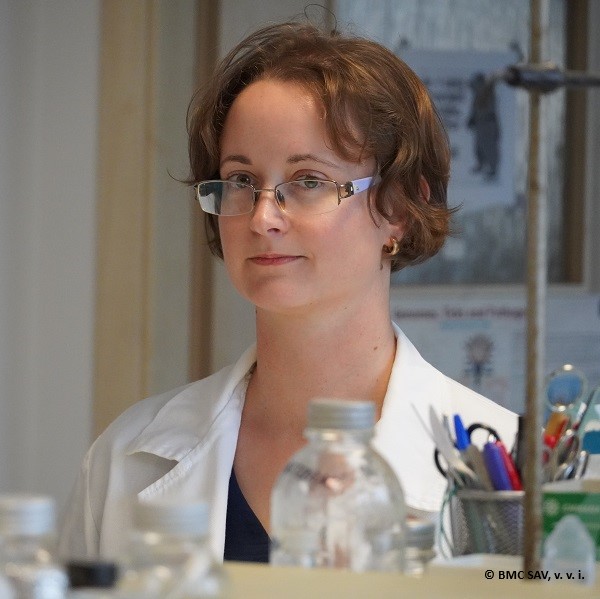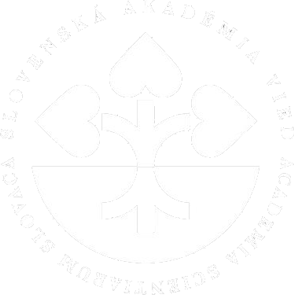SASPRO 2
Project SASPRO 2 (Slovak Academic and Scientific Programme) is a Horizon 2020 mobility programme for experienced researchers based at three top research and training organisations of the Slovak Republic – Slovak Academy of Sciences, Comenius University in Bratislava (partner organisation) and Slovak University of Technology in Bratislava.
Fellows recruited within 3 calls under two types of mobility schemes Incoming and Reintegration strengthen transfer of knowledge, boost the creative environment and increase the quality of research at the host institutions. Programme helps to boost fellows’ career perspectives and possibilities by encouraging them to undertake secondments and first-hand experience in selected non-academic organisations.
SASPRO 2 as one of EU mobility programmes has the potential to contribute towards greater stability in the region – helping to encourage local scientists to return to the Slovak institutes and bringing new opportunities for foreign scientists to gain new knowledge and experiences.

Mgr. Miroslav Baláž, PhD.
Lactate, a metabolic signal and enery fuel driving alternative (project summary)
Obesity is a major threat to human health, being the primary risk factor for type 2 diabetes, dyslipidaemia and cardiovascular disease. Since energy expenditure is increased as a conse-quence of thermogenesis, pharmacological induction of this process presents an interesting therapeutic approach. Both the classical and alternative thermogenic mechanisms require extensive fuel supply from either cellular reserves or systemic circulation. Tissues which pos-sess alternative thermogenic mechanisms will therefore need to have a high metabolic flux. Interestingly, the most obvious changes in plasma metabolome triggered by acute cold in-clude an increase in fatty acids, glycerol, and lactate.
The first two originate from lipolysis and fuel thermogenesis. However, it is not clear what is the source, fate, and function of cold-induced lactate. Based on my preliminary data I propose that white adipocytes are the main source of cold-induced lactate, which serves as a metabolic signal and energy fuel for alternative thermogenic mechanisms. Specific aims of this proposal are to 1) uncover the origin and fate of cold-induced lactate; 2) reveal the function and prove the physiological relevance of lactate during cold; 3) identify targets for pharmacological modulation of thermogenesis.
To meet these goals, I will utilize inducible adipocyte- and brown/beige adipocyte-specific Ldha knockout mice, gain- and loss-of-function studies on human brown and white adi-pocytes, primary skeletal muscle and liver cells, metabolic tracing and bioenergetic mea-surements. Comprehensive metabolomic and transcriptomic analyses of human and murine adipose tissue, skeletal muscle and plasma will serve as basis for identification of novel can-didates with therapeutic potential.
The proposed project will not only provide new models and datasets that will be an invalu-able resource for the metabolic community, but also identify and validate novel therapeutic targets with potential to improve metabolic control.
(www: SASPRO 2)

Mgr. Lucia Balážová, PhD.
Investigating the role of GPR180/CTHRC1 axis in regulation of pancreatic β cell function and pathogenesis of diabetes (project summary)
Diabetes is a chronic metabolic disorder characterized by impaired glucose homeostasis and currently represents one of the major public health challenges worldwide. Although numerous medications to treat diabetes are available, optimizing management of the disease is a continuous effort since prevalence of diabetes is still rising dramatically. Maintenance of pancreatic islets cytoarchitecture and β cells functionality is essential for proper glycaemic control. TGFβ signalling pathway is involved in regulation of diverse physiological processes such as cellular proliferation, differentiation and growth, extracellular matrix deposition and tissue repair. Recently, I discovered and characterized in detail an orphan receptor GPR180 and its ligand CTHRC1 as novel components of TGFβ signalling machinery. My preliminary data show that both global as well as β cell-specific deletion of Gpr180 leads to a defect in the first phase insulin secretion and thereby to impaired glucose tolerance. This research proposal aims to investigate: 1) the role and mechanism of GPR180 action in regulation of β cell function; 2) therapeutic potential of CTHRC1 to restore insulin secretion and improve glycaemic control; 3) genetic variance and functionally validate the existing single nucleotide polymorphisms in GPR180 gene in association with β cells functionality and diabetes. To meet this goal, I will employ β cellspecific Gpr180 knockout mice, viral overexpression of CTHRC1 in vivo as well as gain- and loss-of function studies including CRISPR/Cas9 technology in vitro on β cell-like cell lines of murine and human origin in combination with extensive phenotyping, cell imaging and molecular biology techniques. The proposed project will identify the molecular mechanism by which this novel regulatory axis of TGFβ signalling controls insulin production and/or secretion. Thus, findings of this research program might devise new therapeutic strategies for prevention and treatment of diabetes.
(www: SASPRO 2)

RNDr. Katarína Lopušná, PhD.
Checkpoint molecules and viral immunomodulators in cancer therapy (project summary)
This multidisciplinary project aims to push the current boundaries between immunotherapy, virology and nanomedicine. By combining these emerging scientific fields we will be able to develop revolutionized protocol with subsequent use in clinical practice for diagnosis and efficient treatment of various types of cancers. Immune checkpoints are molecules normally expressed upon activation on T- and B-cells and regulate inhibitory and stimulatory pathways that maintain self-tolerance and immune response. However, tumor cells often overexpress ligands of these immune checkpoint receptors to inhibit the anti-tumor immune response mediated by effector T cells. Therefore, blocking immune checkpoint receptors for the treatment of cancer is recently gaining a great attention as a strategy for immunotherapy in several types of autoimmune diseases and cancers. On the other hand, we and others found that inhibitory checkpoint receptors, such as PD-1 and BTLA are often overexpressed by tumor cell as well, suggesting on their immunotherapeutic potential.
In this project, we aim to identify expression level and new somatic mutations of inhibitory checkpoint receptors in large pool of patients with hematologic malignancies; to test the effect of virus encoded UL144 gene product on proliferation of hematologic malignancies; to identify new virus-encoded proteins targeting inhibitory checkpoint receptors and subsequently design and test the biological peptides interacting with tumor-specific inhibitory checkpoint receptors. Based on these results we will be able to develop new panel of biomarkers used by clinicians for diagnosis and prognosis of cancer; to develop new modification method of viral immunomodulators by introduced aminoacid changes and use it for design of peptides targeting specifically only tumor cells and potentially identify the crystal structures of unmodified and modified viral immunomodulators bound to inhibitory checkpoint receptors.
All obtained data might serve as background for following preclinical and clinical studies.
(www: SASPRO 2)






